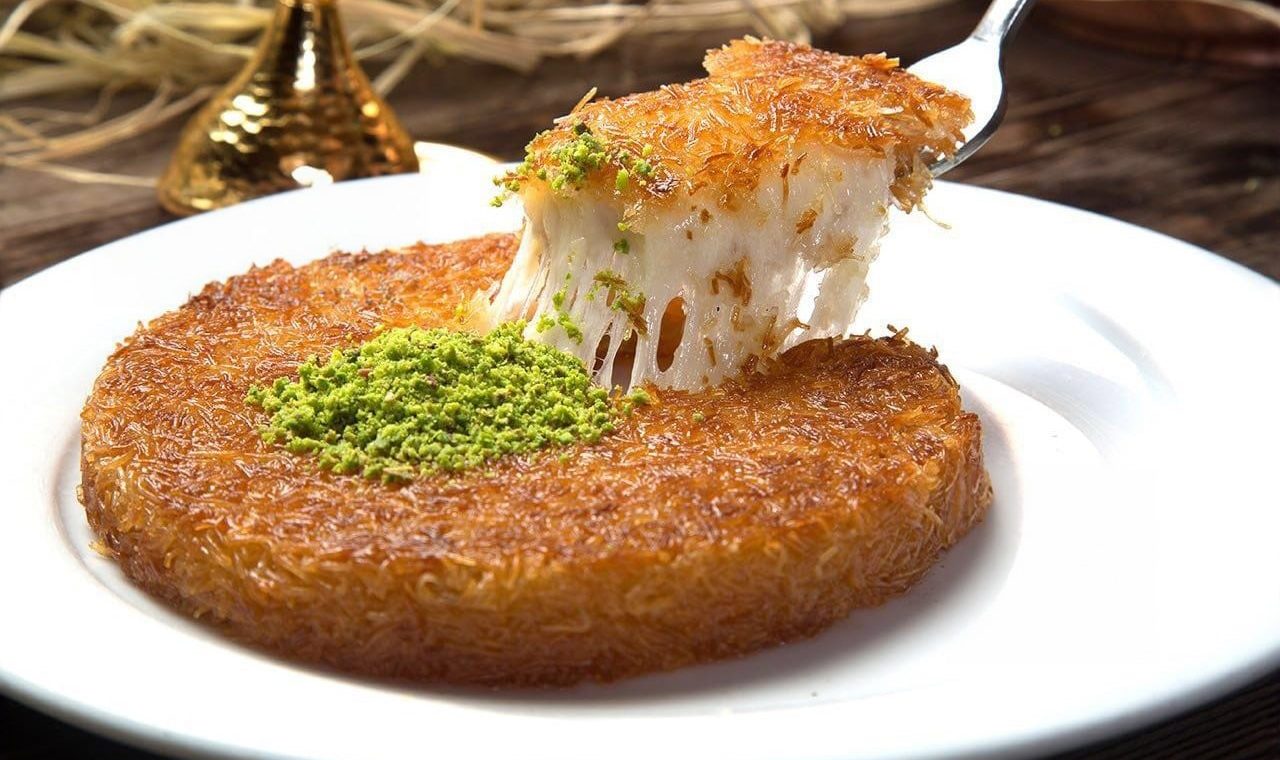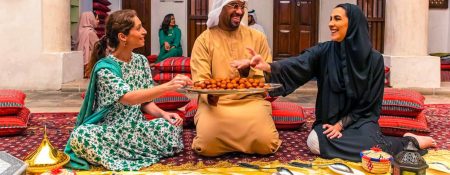
Golden, creamy and incredibly indulgent, Kunafa (or Knafeh) is much more than just a dessert — it’s a cultural experience. In the UAE, where tradition meets modernity at every turn, Kunafa has found renewed life in 2025, taking over dessert menus, pop-ups, and social feeds with both reverence and reinvention. From its deep-rooted history to its starring role in today’s food trends, Kunafa’s comeback is deliciously unstoppable.
Kunafa traces its origins back centuries to the Levant region — with early records in Palestine, Lebanon, and Syria — though some historians claim it was first created in Egypt or during the Umayyad Caliphate. Initially served to royalty during Ramadan to satisfy hunger during fasting hours, the dessert quickly became a staple in celebrations and family gatherings across the Arab world.
Its name varies — Kunafa, Knafeh, Kanafa — but its essence remains the same: comfort, festivity, and a shared sweet tooth.
At its core, Kunafa is a blend of textures and flavors: thin vermicelli-like kataifi dough (or sometimes a semolina base), layered with soft cheese — often Akkawi, Nabulsi, or mozzarella — then soaked in orange blossom or rose-scented sugar syrup. Some variations incorporate clotted cream (ashta), pistachios, or even Nutella in modern twists. It’s typically baked until golden and crispy on top, with the inside warm and stretchy.
The UAE has embraced both classic and contemporary versions. You’ll find traditional Kunafa at family-run bakeries in Deira, while upscale cafes in Dubai Mall or Abu Dhabi’s Al Maryah Island serve it deconstructed, torched tableside, or stuffed into croissants and milkshakes.
In the UAE, Kunafa is more than dessert — it’s a marker of celebration and hospitality. It’s served during Eid, weddings, and Ramadan iftars, symbolizing joy and togetherness. In Emirati homes, offering Kunafa to guests is a gesture of generosity and warmth.
With the UAE’s cultural diversity, Kunafa has also become a culinary bridge, linking Palestinian, Syrian, Lebanese, Egyptian, and Jordanian communities — all bringing their regional Kunafa interpretations to the Emirati cuisine culture. It has become a shared staple in the broader UAE identity, one that blends history with cosmopolitan flair.
In 2025, Kunafa has gone viral once again — not for being traditional, but for being transformative. Dubai and Abu Dhabi cafes are pushing boundaries with Kunafa-infused creations: Kunafa ice cream sandwiches, Kunafa pancakes, and even Kunafa-topped burgers (yes, really).
Social media has played a massive role. Slow-motion cheese pulls, syrup drizzles, and sizzling trays of freshly baked Kunafa are trending across TikTok and Instagram under hashtags like #KunafaDreams and #Kunafa2025. UAE-based dessert influencers and chefs have collaborated with food brands to create limited-edition Kunafa treats, while global food chains are catching on — with pistachio Kunafa donuts and latte pairings now a thing.
But the heart of the trend still beats strongest in the old souks and street corners, where Kunafa is sold hot from the oven, wrapped in paper, and eaten by hand under the glow of Ramadan lanterns.
Kunafa’s rise in 2025 is a testament to how heritage dishes can thrive in modern landscapes. It’s a celebration of flavor, memory, and innovation — one that continues to evolve while honoring its origins. In the UAE, where the old and the new live side by side, Kunafa reminds us that the most powerful trends are often the ones born from tradition.

The UAE’s rich history is rooted in trade and tied to Islam. Its unique location between Europe and the Far East became the crucial factor in it's growth into the world's largest trading hubs. Throughout the ages, these lands had attracted merchants from India and China, and were prized by Europeans, in particular the Portuguese, the Dutch and the British.
After the discovery of oil and the formation of the Emirates, the wise rulers began the rapid development of the country's economy, shaping it into what it is today. Though small in size, the UAE quickly became an important player in regional and international affairs.
Although it's growth and development, UAE heritage have not been forgotten - on the contrary, is still well-respected among the nationals. History and culture of local people can be felt in the legendary hospitality of local hotels, architecture of modern skyscrapers and openness and kindness in living among the multinational community.
Here you can read various articles about UAE heritage, history and culture, and better understand, why this country's development became such a success throughout the years.